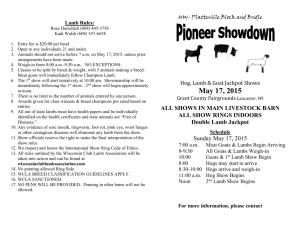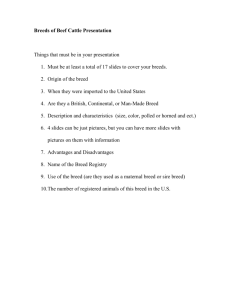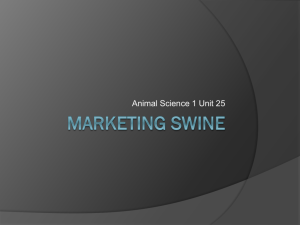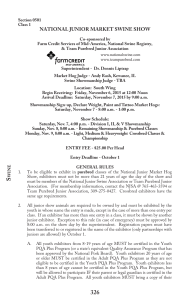Gloucestershire Old Spots
advertisement
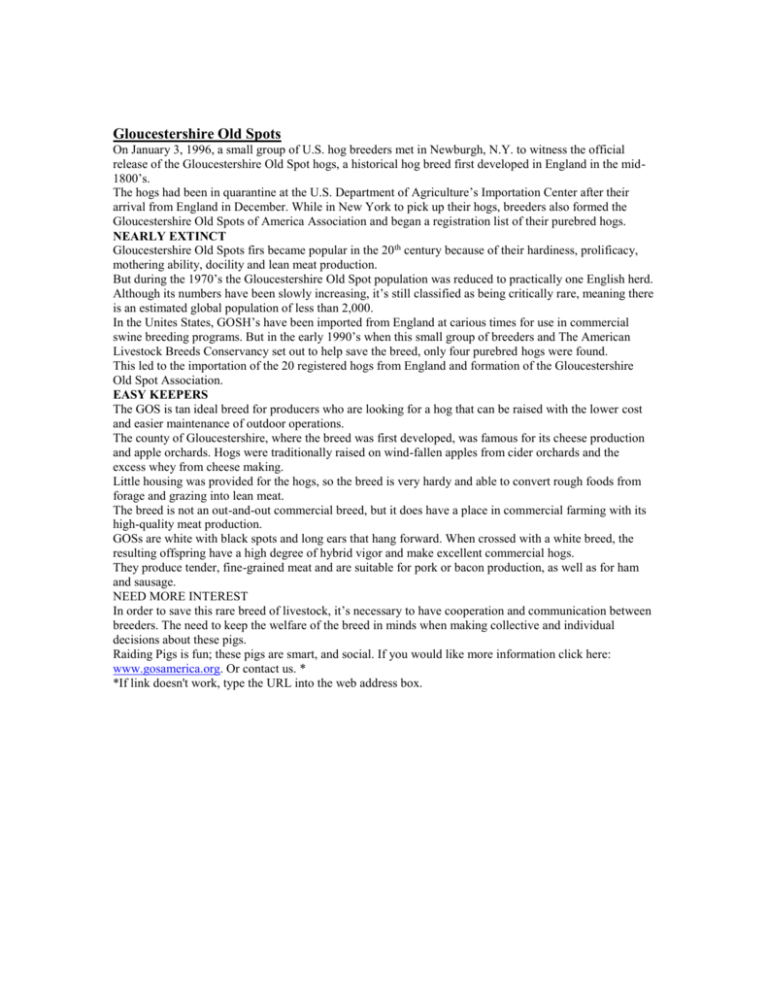
Gloucestershire Old Spots On January 3, 1996, a small group of U.S. hog breeders met in Newburgh, N.Y. to witness the official release of the Gloucestershire Old Spot hogs, a historical hog breed first developed in England in the mid1800’s. The hogs had been in quarantine at the U.S. Department of Agriculture’s Importation Center after their arrival from England in December. While in New York to pick up their hogs, breeders also formed the Gloucestershire Old Spots of America Association and began a registration list of their purebred hogs. NEARLY EXTINCT Gloucestershire Old Spots firs became popular in the 20 th century because of their hardiness, prolificacy, mothering ability, docility and lean meat production. But during the 1970’s the Gloucestershire Old Spot population was reduced to practically one English herd. Although its numbers have been slowly increasing, it’s still classified as being critically rare, meaning there is an estimated global population of less than 2,000. In the Unites States, GOSH’s have been imported from England at carious times for use in commercial swine breeding programs. But in the early 1990’s when this small group of breeders and The American Livestock Breeds Conservancy set out to help save the breed, only four purebred hogs were found. This led to the importation of the 20 registered hogs from England and formation of the Gloucestershire Old Spot Association. EASY KEEPERS The GOS is tan ideal breed for producers who are looking for a hog that can be raised with the lower cost and easier maintenance of outdoor operations. The county of Gloucestershire, where the breed was first developed, was famous for its cheese production and apple orchards. Hogs were traditionally raised on wind-fallen apples from cider orchards and the excess whey from cheese making. Little housing was provided for the hogs, so the breed is very hardy and able to convert rough foods from forage and grazing into lean meat. The breed is not an out-and-out commercial breed, but it does have a place in commercial farming with its high-quality meat production. GOSs are white with black spots and long ears that hang forward. When crossed with a white breed, the resulting offspring have a high degree of hybrid vigor and make excellent commercial hogs. They produce tender, fine-grained meat and are suitable for pork or bacon production, as well as for ham and sausage. NEED MORE INTEREST In order to save this rare breed of livestock, it’s necessary to have cooperation and communication between breeders. The need to keep the welfare of the breed in minds when making collective and individual decisions about these pigs. Raiding Pigs is fun; these pigs are smart, and social. If you would like more information click here: www.gosamerica.org. Or contact us. * *If link doesn't work, type the URL into the web address box.


